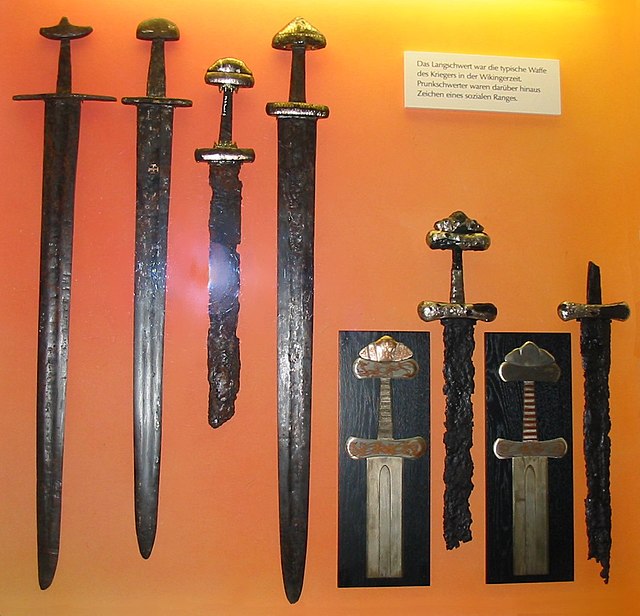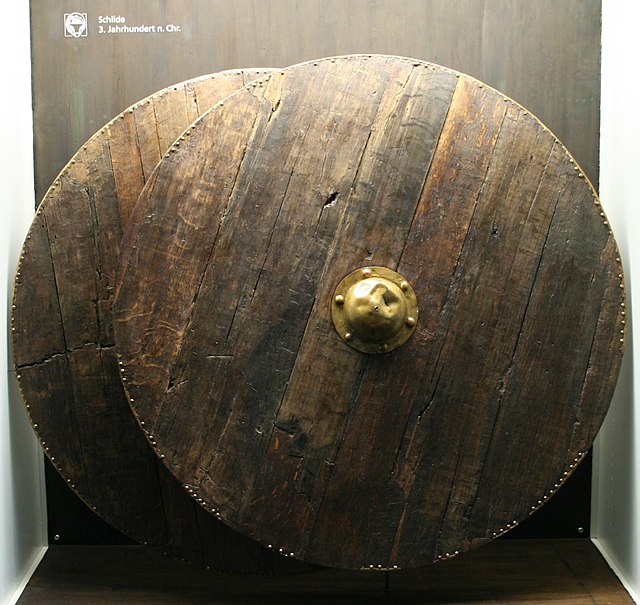Viking Age arms and armour
Knowledge about military technology of the Viking Age is based on relatively sparse archaeological finds, pictorial representations, and to some extent on the accounts in the Norse sagas and laws recorded in the 12th–14th century.
Viking landing at Dublin, 841, by James Ward (1851-1924)
Viking swords displayed at Hedeby Viking Museum
A Danish axe on the Bayeux tapestry
Modern reproduction of a Dane axe
A shield is a piece of personal armour held in the hand, which may or may not be strapped to the wrist or forearm. Shields are used to intercept specific attacks, whether from close-ranged weaponry or projectiles such as arrows, by means of active blocks, as well as to provide passive protection by closing one or more lines of engagement during combat.
Zulu chief Goza and two of his councillors in war-dress, all with Nguni shields, c.1870. The size of the shield on the chief's left arm denotes his status, and the white colour that he is a married man.
Wall painting depicting a Mycenaean Greek "figure eight", 15th century BC, National Archaeological Museum, Athens
Elaborate and sophisticated shields from the Philippines.
Two wooden round shields survived at Thorsberg moor (3rd century AD)








